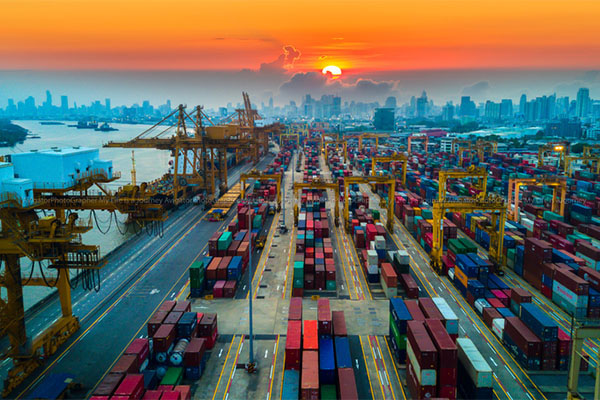POLA and POLB postpone Container Dwell Fee implementation until October 21

The Port of Los Angeles (POLA) and the Port of Long Beach (POLB) said late last week that they have again postponed the implementation date for their ocean carrier Container Dwell Fee, which will now not be considered for a four-week period, until October 21.
This follows previous joint announcements by POLA and POLB, whom collectively account for roughly 40% of United States-bound import volumes, indicating that consideration of the fee would be pushed back each week. Going back to when the fee was initially rolled out on October 25, 2021, POLA and POLB said that the ports have seen a cumulative 52% decline in the amount of aging cargo on their docks.
In late October 2021, the ports announced they would start assessing surcharges to ocean carriers for import containers dwelling on marine terminals, as part of an effort to clear out the significant backlog at the ports.
As previously reported, the ports said that, as per this policy, they will charge ocean carriers for each container falling into two categories:
- for containers scheduled to move by truck, ocean carriers will be charged for every container dwelling nine days or more; and
- for containers moving by rail, ocean carriers will be charged if the container has dwelled for three days or more
POLA and POLB previously said that, effective November 1, 2021, ocean carriers with cargo in either of these categories would be charged $100 per container, which will increase in $100 increments per container per day. The ports said that the fees collected from this initiative will be reinvested for programs to enhance efficiency, accelerate cargo velocity, and also address congestion impacts throughout San Pedro Bay.
These fees were subsequently approved by the Harbor Commissions of both ports on October 29, 2021.
POLA and POLB officials said that prior to the mid-2020 pandemic-driven run-up in imports, containers for local delivery, on average, were on container terminals for less than four days, with containers destined for trains dwelled for less than two days.
They added that any fees collected from dwelling cargo will be reinvested for programs designed to enhance efficiency, accelerate cargo velocity, and address congestion impacts.
On a recent media conference call, POLA Executive Director Gene Seroka said that there were only 11 container vessels within the 150 nautical mile-area headed to POLA and POLB.
“That is compared to a high of 109 in January,” he said. “We have collectively reduced the backlog of containerships by 90%, all while processing near-record cargo volume. Beyond the 150-mile marker, 45 vessels are headed here from Asia to the twin ports. That is a good solid number and 16% more than what we saw in January, which means our docks will be active in the weeks ahead. Over the last month, we have averaged 12 container vessels at berth at the Port of Los Angeles, which is 20% more than we handled prior to the cargo surge that started in mid-2020.”

Article Topics
Ocean Freight News & Resources
Following USTR review, White House announces tariff increases on certain U.S.-bound imports from China Port Tracker report is bullish on import growth over the balance of 2024 Maryland DOT: $1.9 billion and up to four years to rebuild bridge sunk near Baltimore port 2024 State of Freight Forwarders: What’s next is happening now Baltimore bridge recovery efforts continue with opening of new channel Q1 sees a solid finish with strong U.S.-bound import growth, reports S&P Global Market Intelligence Baltimore suing ship that crashed into bridge, closing port, costing jobs More Ocean FreightLatest in Logistics
Following USTR review, White House announces tariff increases on certain U.S.-bound imports from China Insider Q&A: Improving Freight Transportation: Anticipate scenarios, mitigate disruption, think long-term Inflation continues to have a wide-ranging impact on supply chains, notes Blue Yonder survey National diesel average decreases for the fifth consecutive week, reports EIA New Union Pacific service connects Southern California and Chicago Automate and Accelerate: Replacing Pick-to-Light with the Next Generation of Automation STB Chairman Martin J. Oberman retires More LogisticsAbout the Author
Subscribe to Logistics Management Magazine

Find out what the world's most innovative companies are doing to improve productivity in their plants and distribution centers.
Start your FREE subscription today.
May 2024 Logistics Management

Latest Resources














